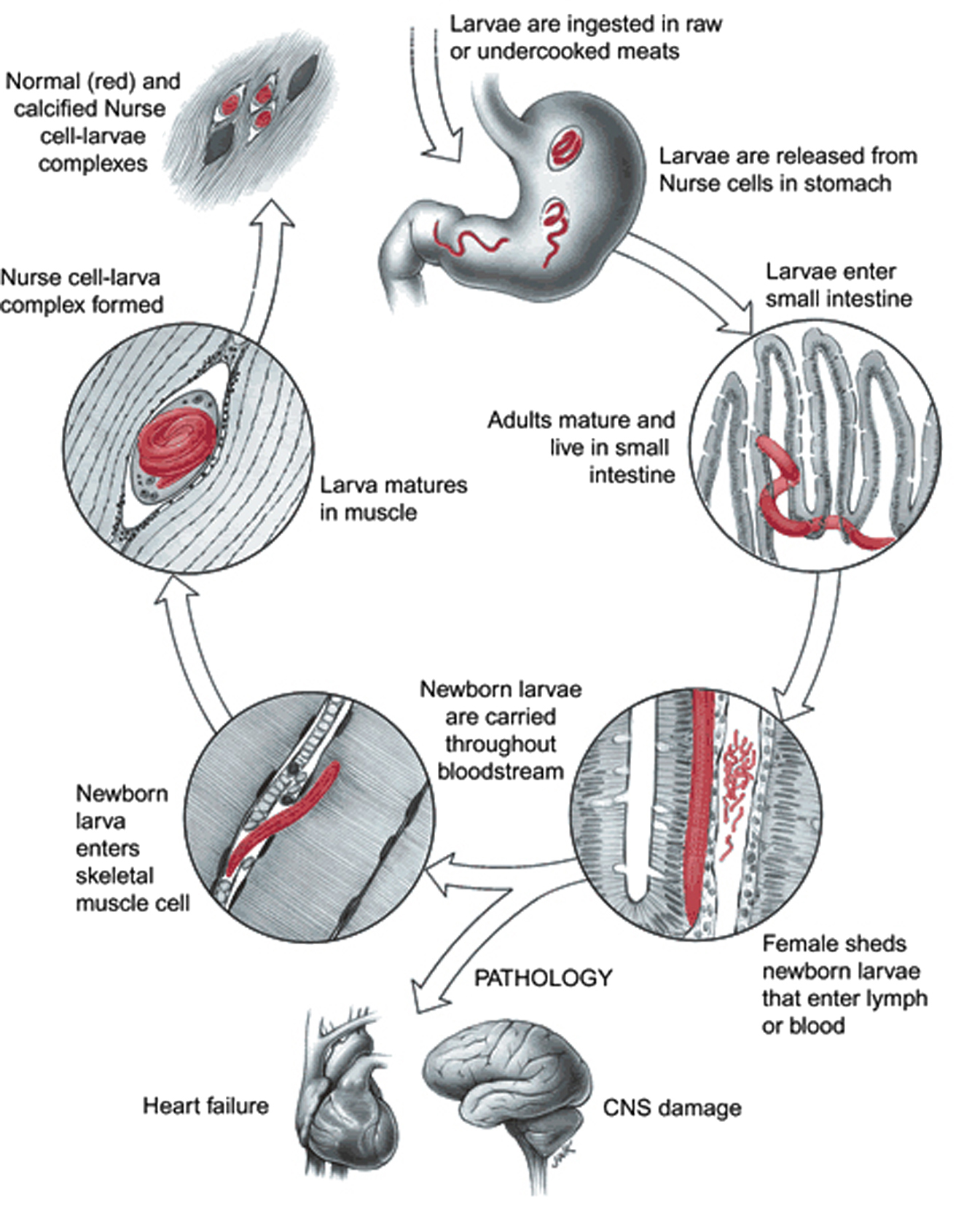Trichinella spiralis is a nematode parasite, occurring in rats, pigs, bears and humans, and is responsible for the disease trichinosis. It is sometimes referred to as the "pork worm" due to it being found commonly in undercooked pork products.
LIFE CYCLE
Trichinella species are the smallest nematode parasite of humans, have an unusual life cycle and are one of the most widespread and clinically important parasites in the world.[1] The small adult worms mature in the intestines of an intermediate host such as a pig. Each adult female produces batches of live larvae, which bore through the intestinal wall, enter the blood (to feed on it) and lymphatic system, and are carried to striated muscle. Once in the muscle, they encyst, or become enclosed in a capsule.
Nurse cells containing Trichinella Spiralis
This roundworm causes the disease called Trichinosis or Trichinellosis. The first symptoms a human has are gastrointestinal and occur 1-2 days after the consumption of raw or undercooked meat from the trichinella infected animal.
Early Symptoms:
-Nausea
-Diarrhea
-Vomiting
Classic symptoms of the disease occur two weeks after the infection and can last up to 8 weeks.
-Muscle pain
-fever
-swelling of face (especially eyes)
-chills
-headache
-rash
-constipation
Can be treated with prescription drugs as soon as diagnosed.














-Wxl.jpg)

